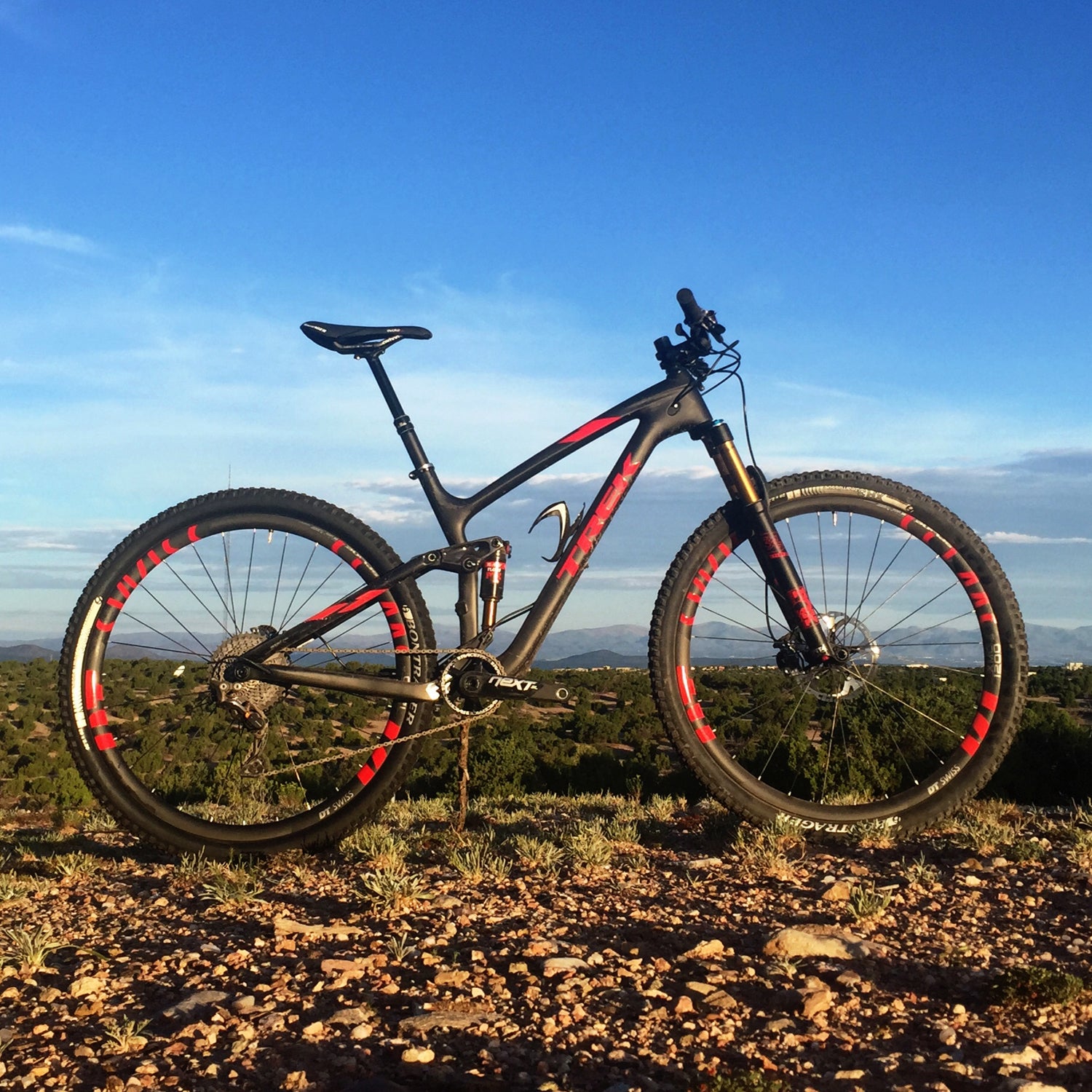Trek launched a squad of new mountain bikes earlier this summer, including the 29+ Stache, a hardtail called the Pro Caliber that uses the IsoSpeed decoupler from the Domane, and a new race platform under the resurrected Top Fuel name. Amid that scrum, it was easy to miss the revised , a 120-millimeter trail bike. But after a month of testing, I can say that this is definitely not a bike to overlook.
Trek keeps the dual-track wheel system for the Fuel EX (and the Remedy), offering both 29 and 27.5 models so consumers can choose. I rode the 27.5┬álast year and liked it well enough, but climbing back on the 29er version underscores a feeling that IÔÇÖve had for a couple of years now: at shorter travel lengths, say 135┬ámillimeters┬áand shorter, the 29er wheels are both more forgiving and more fun to ride. Of course,┬áit all depends on your fit and riding style. But overall, I keep gravitating back to the bigger wheels.
So whatÔÇÖs new for 2016?
The most noticeable change is the suspension, with a Fox Factory Float EVOL rear shock and a Fox Factory Float 34 fork. I noted this already on our first look of┬áthe Yeti SB4.5C, which runs the same suspension, but I will say it again: FoxÔÇÖs new designs are going to make the company competitive again with RockShox after a couple of years of foundering. This suspension is so smooth, seamless, and creamy that I simply have no complaints. Obviously the increased stanchion width to 34 makes a huge difference in stiffness and wheel tracking.┬áBut Fox has also dialed in the internals so this bike has outstanding pedaling performance and plush, assured descending.
This suspension is so smooth, seamless, and creamy that I simply have no complaints.
The other big shift for the Fuel EX 29 is the move to new hub standards: Boost 148┬áin the rear and Boost 110 in the front. Trek has spearheaded this change, which is being adopted across big swathes of the industry this year. It widens the hubs, which alleviates the chain line issues cropping up with 1×11 systems and fatter tires, and is said to add stiffness and control in the wheels.
IÔÇÖm honestly ambivalent. I love anything that will make bikes ride better. And these DT Swiss XMC 1200 wheels indeed feel unbending and amazingly light. But the change means that a lot of wheels I already own are going to be obsolete, which is a major bummer. I think the industry needs to consider how frequently they can change standards and still get consumers to buy into it. Support for existing hubs will continue for the foreseeable future, so unless youÔÇÖre trading in a bike and own more than one set of wheels, itÔÇÖs probably not an issue. But it would still be nice to see more dramatic and less frequent design changes.
Finally, the top-end Fuel EX 9.9 gets the new Shimano XTR groupset. There has been some criticism of the 11-40 cassette because it has a smaller range than SRAMÔÇÖs 10-42. I agree that wider here would be better, though┬áhonestly, the shift performance on the Shimano setup is better, smoother,┬áand quieter. With a 32 ring up front, I was┬ácomfortable riding around Santa Fe, which has very steep climbs and trails up to around 12,000 feet, but did spin out on fast fire-road descents. I like the simplicity and weight of the 1x, and this one is very good. But I will say that most people are better served with two rings.
Like the Yeti SB4.5C, the Fuel EX is probably the optimal trail bike for the majority of ridersÔÇöboth light for all-day pedaling (23.9 pounds for our medium) and with enough honed-in travel to take on most serious bits.
The moaning will commence when I say that the fully loaded ┬áwe rode sells for $8,400. ThatÔÇÖs a lot, but significantly less than a similarly equipped bike from many other manufacturers. More importantly, the new Fuel EX comes in six models (two carbon, four aluminum), with prices all the way down to $1,990, so itÔÇÖs possible to get in on the improvements at pretty much any budget.


